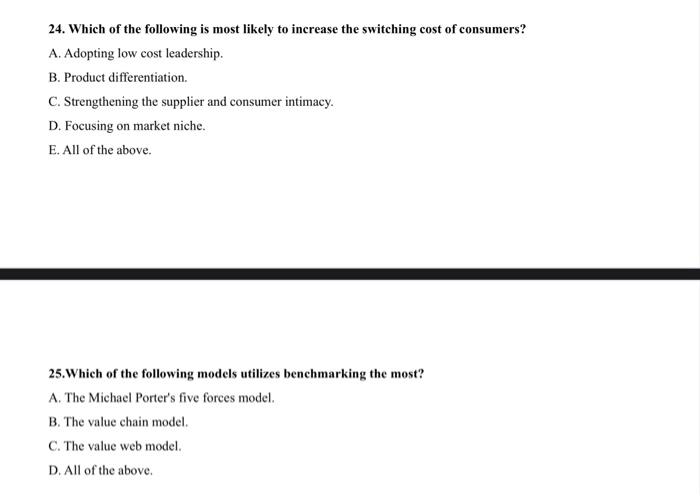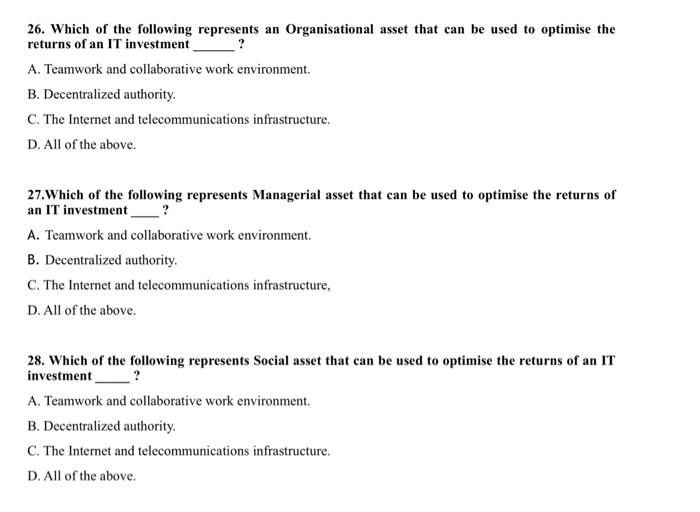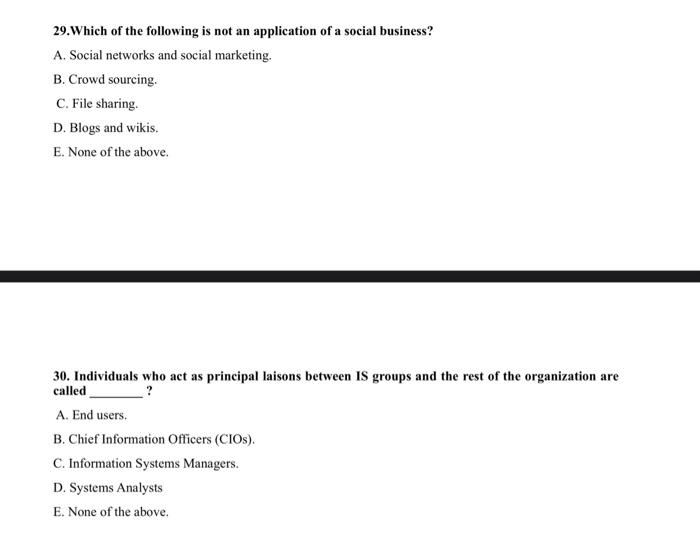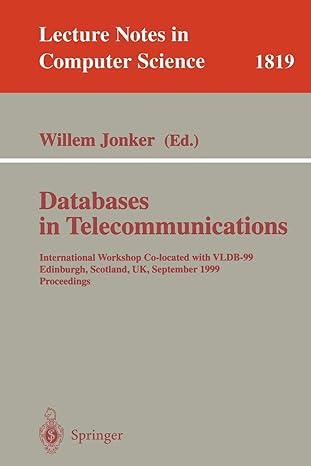Management Information Systems
objectives Question 12 to 30
12. When implementing change in an organization, all of the following will have to change, except? A. People. B. Technology. C. Structure. D. Culture. E. None of the above 13. Which of the following does not constitute an aspect of the organizational structure? A. Hierarchy. B. Specialization. C. Routines. D. Culture. 14. The following are support activities in the value chain model, except? A. Electronic scheduling and messaging systems. B. Computer-aided design systems. C. Workforce planning systems. D. Equipment maintenance systems. 15. A line manager for a banking supervisory role is likely to use which of these systems the most? A. DSS. B. MIS. C. TPS. D. ESS. E. Business Intelligence Systems. 16. A local producer of plantain chips may be more concerned about this marketplace force? A. Product differentiation. B. New market entrants. C. Traditional competitors. D. B and C only. E. All of the above. 17.The owner of a local multimedia company should be more concerned about which marketplace force? A. Product differentiation. B. New market entrants. C. Traditional competitors. D. B and C only. E. All of the above. 18. Which of the following best describes an information system, at its very basic level? A. Technology, Management and Organization. B. Technology and People. C. Technology, Management, Organization and its external environment. D. All of the above. 19, Which of the following is more likely to affect the optimum utilization of an enterprise application? A. Complexity of a technology. B. Poor human decisions around a technology. C. Design-reality gap. D. A and B alone. E. All of the above. 20. The success of an Information System can be measured by all of the following except ? A. Enable business processes B. Enhance organizational structure and culture. C. Increase the customer and business value. D. Increase the supplier and business value. E. None of the Above. 21. Which of the following represents an emerging trend in the Technology dimension of an Information System? A. The mobile digital platform that emerges to compete with PCs as a business system. B. The acceleration of Business Intelligence Applications. C. The emergence and acceleration of social businesses. D. All of the Above. 22. Which of the following represents an emerging trend in the Organisation dimension of an Information Systems? A. The emergence of mobile digital platforms to compete with PCs as a business system B. The acceleration of Business Intelligence Applications. C. The emergence and acceleration of social businesses D. All of the Above. 23. Which of the following represents an emerging trend in the Management dimension of an Information Systems? A. The mobile digital platform that emerges to compete with PCs as a business system. B. The acceleration of Business Intelligence Applications C. The emergence and acceleration of social businesses. D. All of the Above. 24. Which of the following is most likely to increase the switching cost of consumers? A. Adopting low cost leadership. B. Product differentiation. C. Strengthening the supplier and consumer intimacy. D. Focusing on market niche. E. All of the above. 25. Which of the following models utilizes benchmarking the most? A. The Michael Porter's five forces model. B. The value chain model. C. The value web model. D. All of the above. 26. Which of the following represents an Organisational asset that can be used to optimise the returns of an IT investment ? A. Teamwork and collaborative work environment. B. Decentralized authority. C. The Internet and telecommunications infrastructure. D. All of the above. 27. Which of the following represents Managerial asset that can be used to optimise the returns of an IT investment ? A. Teamwork and collaborative work environment. B. Decentralized authority. C. The Internet and telecommunications infrastructure, D. All of the above. 28. Which of the following represents Social asset that can be used to optimise the returns of an IT investment ___ ? A. Teamwork and collaborative work environment. B. Decentralized authority. C. The Internet and telecommunications infrastructure. D. All of the above. 29. Which of the following is not an application of a social business? A. Social networks and social marketing. B. Crowd sourcing. C. File sharing. D. Blogs and wikis. E. None of the above. 30. Individuals who act as principal laisons between IS groups and the rest of the organization are called ? A. End users. B. Chief Information Officers (CIOs). C. Information Systems Managers. D. Systems Analysts E. None of the above






















